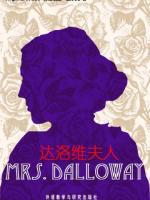A Symphony of Inner Worlds: Mrs. Dalloway
用户822900
In Mrs. Dalloway, Virginia Woolf crafts a literary masterpiece that
transcends the boundaries of traditional narrative, offering a profound
exploration of the human psyche, the passage of time, and the
intricacies of social life in post-World War I England. Through her
innovative stream-of-consciousness technique, Woolf delves deep into the
minds of her characters, revealing their innermost thoughts, memories,
and emotions with unparalleled intimacy and sensitivity. The novel
unfolds over the course of a single day in June 1923, as Clarissa
Dalloway, a wealthy society hostess, prepares to throw a lavish dinner
party in her London home. As she goes about her daily routine,
Clarissa's mind wanders, reflecting on her past, her present, and her
future. She thinks about her marriage to Richard Dalloway, a
conservative politician, and the compromises she has made in the name of
social convention. She remembers her youthful love affair with Sally
Seton, a free-spirited woman who represented everything that Clarissa
was not. And she contemplates the meaning of life, the nature of
happiness, and the inevitability of death. At the same time, Woolf
introduces us to a cast of other characters, each of whom is struggling
with their own inner demons and existential crises. Septimus Warren
Smith, a shell-shocked war veteran suffering from post-traumatic stress
disorder, is haunted by the memories of his experiences on the
battlefield. His wife, Lucrezia, a young Italian woman, is desperate to
help him but feels increasingly isolated and alone. Peter Walsh, an old
flame of Clarissa's, returns to London after a long absence, hoping to
rekindle their relationship but finding himself confronted with the
realities of Clarissa's married life. And Lady Bruton, a powerful
society matriarch, hosts a lunch for a group of politicians and
intellectuals, where they discuss the state of the nation and the future
of the British Empire. Through these intersecting storylines, Woolf
explores a wide range of themes, including love, loss, identity, class,
gender, and the nature of time. She shows us how the past shapes the
present, how our memories and experiences define who we are, and how the
social and political context in which we live influences our thoughts,
feelings, and actions. She also challenges traditional notions of
narrative structure and character development, using the
stream-of-consciousness technique to create a sense of fluidity and
fragmentation that mirrors the complexity and unpredictability of human
consciousness. One of the most striking features of Mrs. Dalloway is
Woolf's use of language. Her prose is lyrical, poetic, and highly
evocative, capturing the nuances of human experience with remarkable
precision and beauty. She uses a rich vocabulary, complex sentence
structures, and a variety of literary devices, such as imagery,
symbolism, and metaphor, to create a vivid and immersive reading
experience. Her descriptions of London, for example, are both detailed
and impressionistic, bringing the city to life in all its gritty glory.
And her portraits of her characters are so vivid and lifelike that we
feel as if we know them personally.



 京公网安备 11010802032529号
京公网安备 11010802032529号